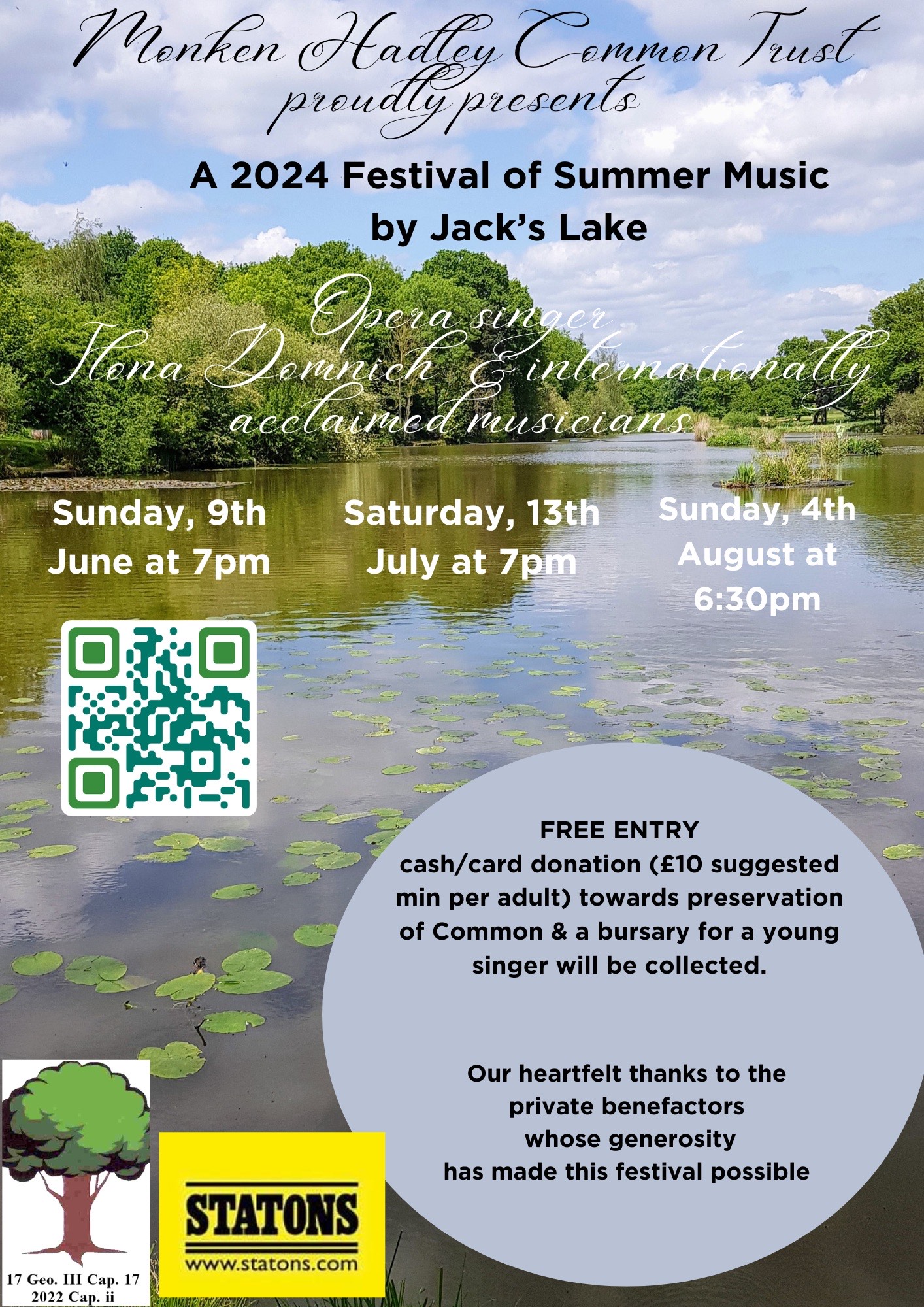Take a Tour of the Common
The White Gates
_hires.jpg)
Hadley gate - Photo by Alan Magnus
Five white-painted gates stand at the main access points to the Common in Games Road, Hadley Road, The Crescent, Camlet Way, and Hadley Green Road. A gate was first erected in 1779, soon after the Common was created, "between the New Common and the King's Allotment”, to stop “the nuisance of cattle straying”. The gates at The Crescent and Hadley Road are relative newcomers, having been first constructed when these roads were developed after the sale of Woodcock Farm to the British Land Company in 1868; the present design of all five gates probably originated at about that time. The gates are all now included on the statutory list of buildings of historic or architectural merit (Grade II).
Mount House
_2008_03_22_Magnus_hires.jpg)
Mount House - Photo by Alan Magnus
This fine mid-eighteenth century house in Camlet Way once stood almost isolated in the Chase, and was then known as "Mount Pleasant". Much later, in May 1864, it was sold at auction for £3,400. For many years it was the home of the Dove family, the well known church builders; between 1947 and 2017 it was St Martha’s Senior School for girls run by St. Martha's Convent, which then went on to become Mount House School which is now co-educational in all year groups.
The War Memorial
_hires.jpg)
The War Memorial, complete with a picture of a cow! - Postcard by Photochrom Co. Ltd., London and Tunbridge Wells, Grano series No: 50684, unposted
A memorial to those killed in the Wars of 1914-19 and 1939-45 is situated in the upper part of the Common, in the chestnut avenue. It was unveiled by Lt.Col. F. E. Fremantle O.B.E., T.D., M.P. on December 19th, 1920, as an exact replica of the beautiful fifteenth century Mercat Cross at Inverary, and on the face it read “To the ever glorious memory of our men who fell in the War, 1914-1919”, with 48 names underneath. The inscriptions became illegible and a plaque was added to explain the purpose of the memorial, and the inscriptions were recarved in 1998.
Warwick's Oak
_hires.jpg)
Warwick's Oak - Postcard by E. J. & H. Clarke, East Finchley. N. 63, unposted
The remains of an old oak tree (sometimes referred to as the King Edward IV Oak, and occasionally as Warwick's elm) stood opposite the gate to Hadley Rectory, and in 1903 was recorded as having a circumference of 27 feet (8.23 m). It did not long survive the removal of its protective railings in 1941 as part of the war effort. The tree reputedly marked the spot where the Earl of Warwick ("Warwick the Kingmaker") was killed at the Battle of Barnet in 1471.
Hadley Hurst
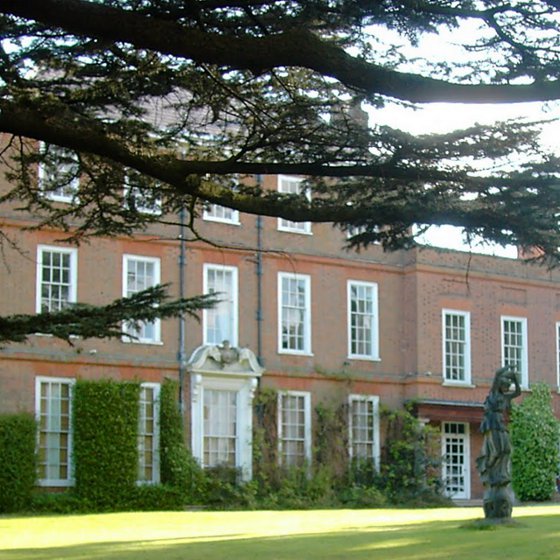
Hadley Hurst - Photo by Alan Magnus
This fine and dominant Queen Anne mansion is reputed to have been designed by Sir Christopher Wren and built in 1700. In front of the house are two magnificent cedars of Lebanon. The house faces south so that the elevation seen from the Common is actually its rear.
The Hadley (Barnet) branch of the Foundling Hospital
_hires.jpg)
A view of the Foundling Hospital, 1750. The building pictured here was opened in Bloomsbury in 1745, and continued in use until the 1920s; unfortunately no pictures of the Monken Hadley branch survive. - Photo © Coram in the care of the Foundling Museum, reproduced by kind permission of the Museum
The Foundling Hospital was set up in London in 1741 by the philanthropic sea captain Thomas Coram, two years after obtaining a Royal Charter from George II. It was a children's home established for the “education and maintenance of exposed and deserted young children”.
In 1762, fifteen years before the creation of the Common, a Barnet woman, Prudence West set up a local branch of the Foundling Hospital in Monken Hadley, which accommodated 40 children. Its exact location isn't known, but it overlooked what was then still Enfield Chase (and is now the Common), it had grazing rights and it may have been somewhere between Hadley Hurst and (what are now) the white gates at the end of The Crescent. After a brief period of only just over five years, on Lady Day (March 25th) 1768, the building was taken over by Monken Hadley Parish for use as a parish workhouse.
Latimer's Elm
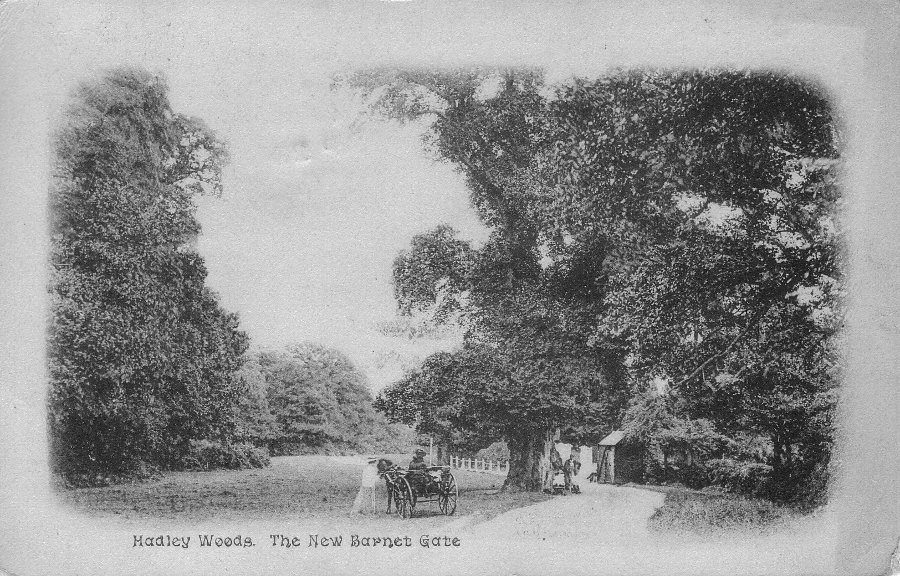
New Barnet (Hadley Road) gate, about 1906. The gateposts are just visible to the left of the gatekeeper's hut. The large tree in the centre of the picture is Latimer's Elm. - Postcard, postmark 1906, unknown publisher
Until the late 1930's a large elm tree grew on the edge of the Common, just above the Hadley Road gate, though by 1934 it had become a "fire-blackened ruin"
Local legend claimed that Bishop Latimer preached under this tree - but it's simply not credible that the tree pictured about 1906 was venerable enough to have been a mature specimen during the lifetime of Bishop Latimer (c.1487-1555); it's more likely that it was named after a local resident of that name.
The Pound
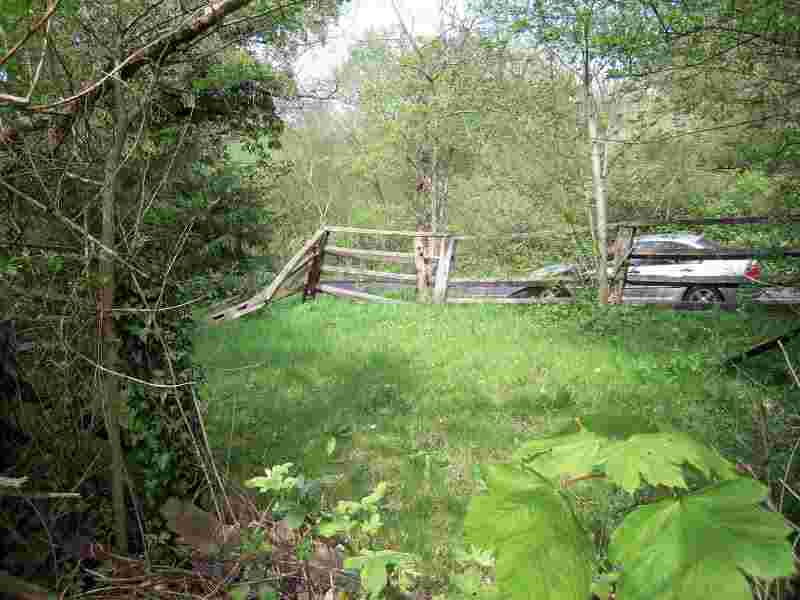
The Pound - Photo by Alan Magnus
There were, apparently, a number of pounds (or “pinfolds”), and strayfields, situated on the Chase at the time of its enclosure. These were places where stray livestock could be kept in a dedicated enclosure, until claimed by their owners or sold to cover the costs of impounding. They were reserved to the Crown, but the Churchwardens were empowered to move them to a more convenient place and to erect others for impounding trespassing cattle.
Such a pound can be found on the strip of Common between the road and The Crescent; it was used a few years ago to restrain a stray donkey found loose on the Common! The Pound was last repaired thanks to the generosity of Spike Milligan, who lived in Monkenhurst nearby; it's now in a rather poor state again, and needs more money spending on it.
Woodland Art
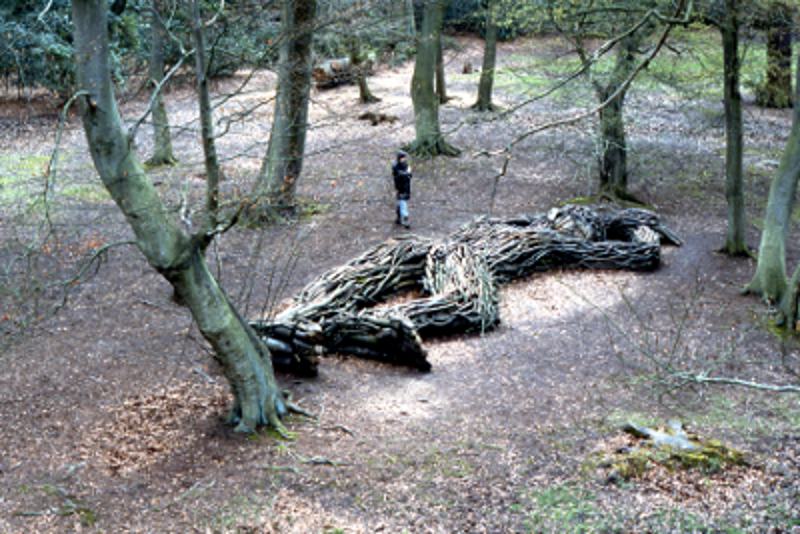
Ben Wilson: sleeping figure, Hadley Woods 1986 (no longer exists) - Photo by Ben Wilson
Over the years a number of sculptures have sprung up on the Common. Many of these have been the work of Ben Wilson, an artist who has worked throughout his life in many different situations, using many different mediums creating a wide range of works from tiny chewing gum miniatures to vast sculptural buildings.
Ben was brought up in Crescent Road, New Barnet, and knew the Common well as a child; he presently lives in Muswell Hill with his family. Though he is now better known as the “chewing gum artist”, Ben continues to work in the medium of wooden sculptural reliefs in various parts of the world.
Folly Farm
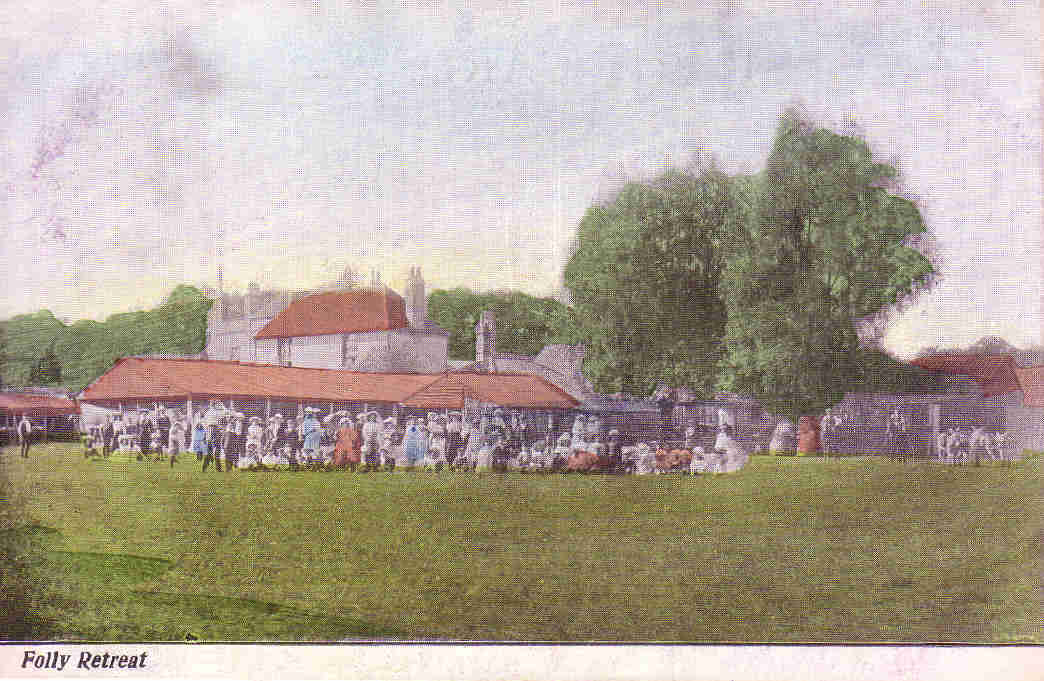
Folly Farm about 1906. (Notice the donkeys at the right hand side of the picture.) - Postcard, postmark 1906, unknown publisher
Alongside the bridleway between Pymmes Brook and what is now the railway bridge, Thomas Turpin built Folly House (later called Folly Farm) in the seventeenth century.
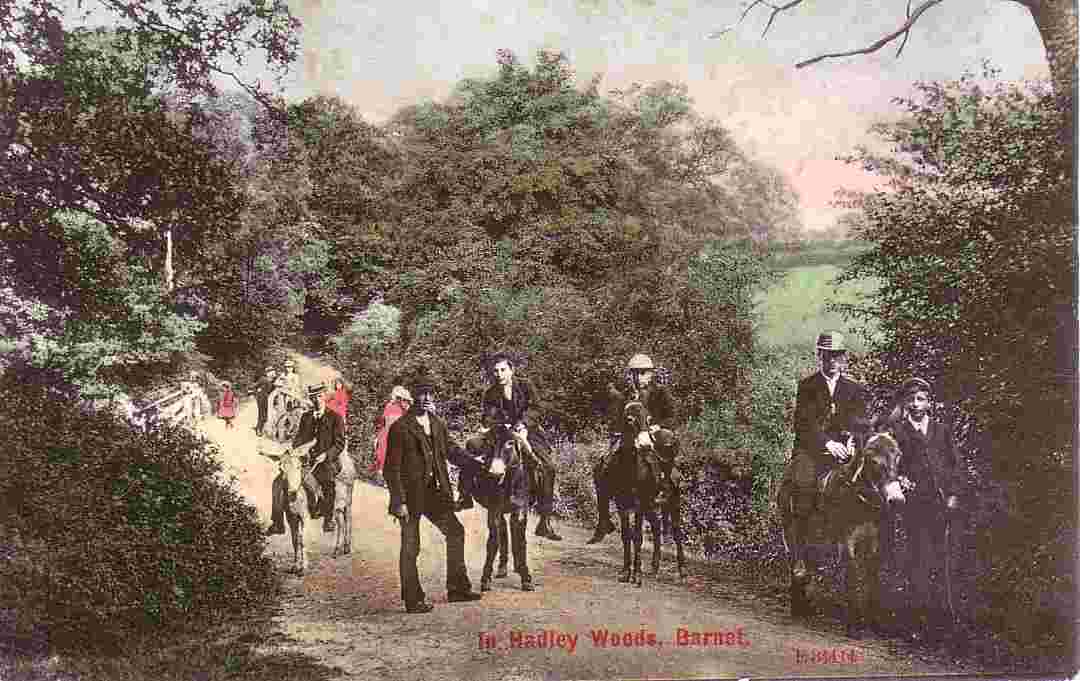
Donkey rides on the bridleway, about 1913. Folly Bridge - then with wooden parapets rather than the present masonry ones - is on the left hand side of the picture - Postcard, postmark 1913, by O. F[lammger], Stengel & Co. Ltd., Published London N. No: E34414
At the beginning of the 20th century the property was developed into an entertainment centre by the Frusher family to serve the many visitors to the Common who, on bank holidays, journeyed out from London on the Great Northern Railway. There was a prominent helter-skelter tower, some caged animals and big sheds in which teas were served to cyclists and the day trippers from London. Donkey rides were also on offer.
The East Barnet School was built on the site in the 1960's and remained there until 2010. The site is now occupied by the new Jewish Community Secondary School (JCoSS) which will ultimately have 1300 pupils.
Jack's Lake
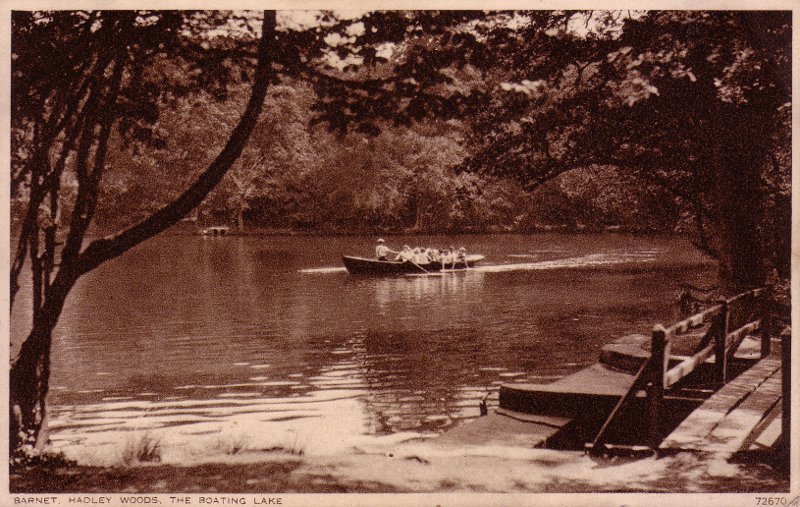
Jack's Lake, about 1942 - Postcard, postmark 1942, by Photochrom Co. Ltd., Royal Tunbridge Wells No: 72670
This lake, the lowest of a series of three fish ponds created on the Monkey Mead Brook, is partly on the Common and partly on land which is now owned by the Hadley Wood Golf Club. Over the years the lake has had a number of different names: during the 18th century, when it was still on Enfield Chase, it was known as "New Pond", and though it appears as “Beech Hill Lake” on most modern maps, it is known locally as Jack's Lake.
Until sometime after the war, the part of the lake on the Common was leased to East Barnet Urban District Council and rowing boats were available for hire. The lake is now maintained by the Hadley Angling and Preservation Society to whom the fishing is licensed by the Trustees and the Hadley Wood Golf Club.
Ludgrove Hall
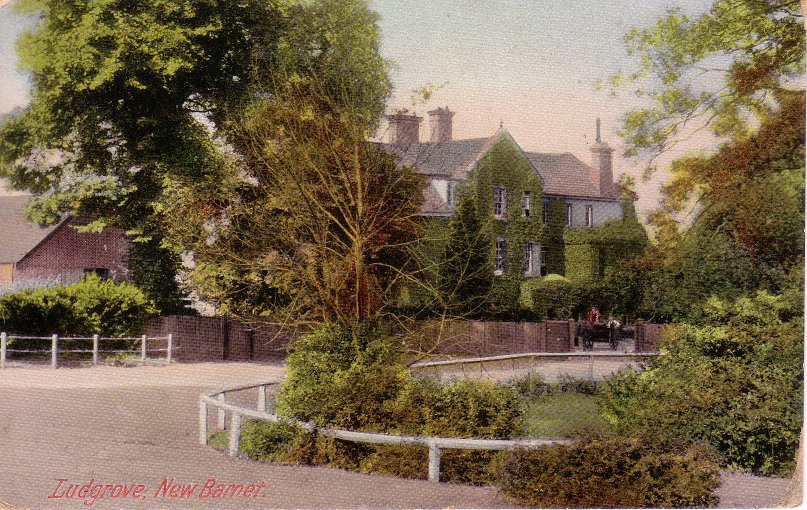
Ludgrove School (Ludgrove Hall), about 1907. The circular railings surrounded an old pond, probably badly silted up even by then. Though no trace of the pond remains, the present footpath still skirts around its site! - Postcard, postmark indistinct, by Blum & Degan, "Kromo" series, No: T 21918
In 1971 described as “a plain early-19th-century stuccoed building, with a large late-19th-century red-brick extension to the south and a still later addition of c. 1900, with a mansard roof” - is situated at the Cockfosters end of the bridleway. More recently the Hall and its grounds have been converted (some would say rather unsympathetically) into a gated development, with apartments in the old Hall, and houses standing on the former gardens.
Ludgrove Hall was originally part of the Ludgrove (or Ludgraves) estate, the existence of which was recorded as early as 1423, and was once owned by Sir Roger Wilbraham who, in 1612, founded Wilbraham's almshouses for ‘six decayed housekeepers’ on Hadley Green.
Ludgrove School - In 1891, Arthur Dunn, a centre forward who twice captained England at football, established a large preparatory boarding school - Ludgrove School - using both Ludgrove Hall and the Blue House Farm buildings next door. (In 1937 the school was moved to its present location near Wokingham, and Princes William & Harry both spent time there.)
Five-year Management Plan 2024-29
Please find attached the Five-year Management Plan 2024-29
AGM Minutes
Please find attached the AGM minutesof meeting 16/10/2023.
Vacancies corner
- Woodlands volunteer - we are looking for someone with expertise on woodlands in general to join either as a volunteer or, possibly, as a trustee. Please contact treasurer@mhctrust.org.uk for more details.
